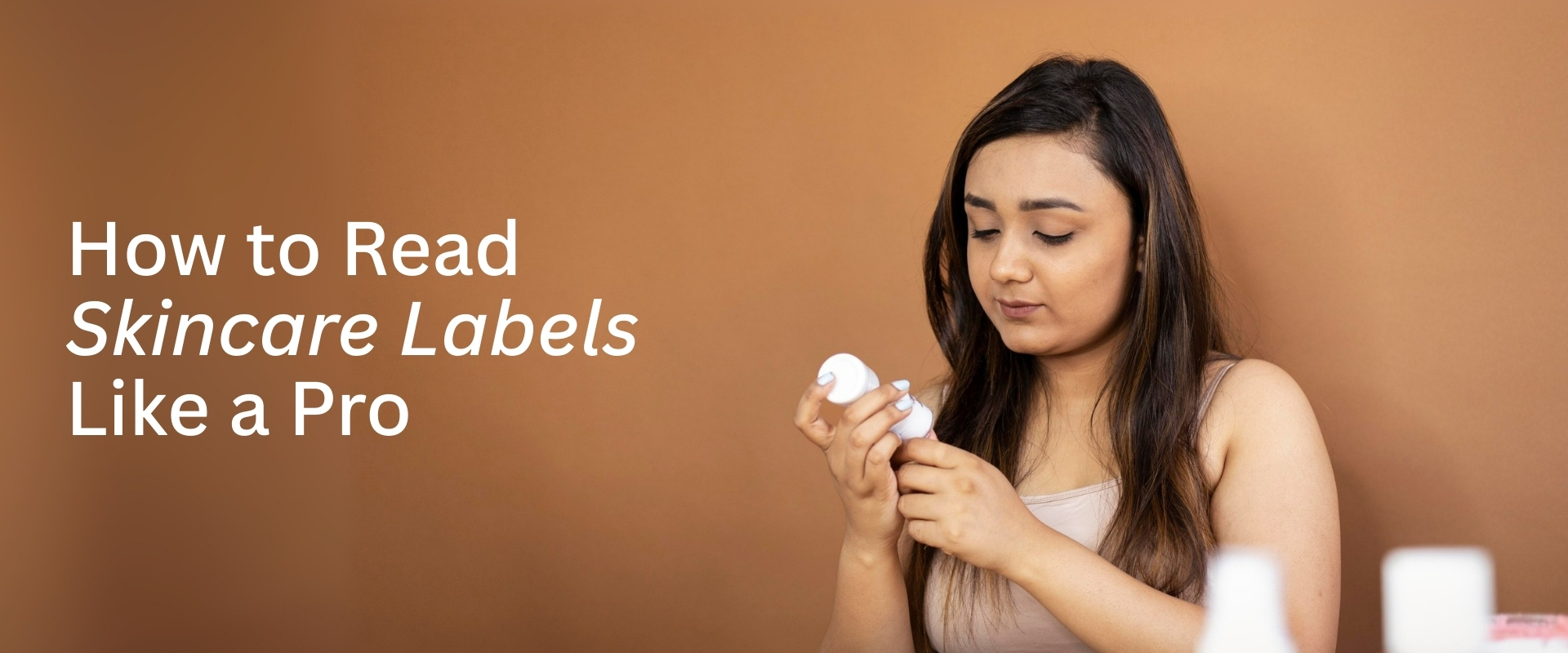Start with the Basics: The Front Label Isn’t the Full Story
For example:
- “Hypoallergenic” doesn’t guarantee you won’t react to it.
- “Clean beauty” has no official definition, it means different things to different brands.
- “Fragrance-free” means no added scent, but “unscented” may still contain masking fragrance.
1.Read the Ingredient List (But Don’t Panic)
All skincare products have a list of ingredients (usually called “INCI list”, short for International Nomenclature of Cosmetic Ingredients). This list goes from highest concentration to lowest, which means the ingredients at the top make up most of the product.
- First 5–7 ingredients are key. These usually make up 80–90% of the formula.
- If a powerful ingredient (like retinol, Vitamin C, or niacinamide) is buried way down the list, it might not be in a high enough concentration to make a real difference.
- But! Some ingredients are potent in small amounts like peptides or acids, so even if they’re low on the list, they can still work well.
2. Know the Hero Ingredients
It helps to get familiar with a few common active ingredients. Here are some you might want to look for based on your skin concerns:
- Dryness: Hyaluronic acid, glycerin, ceramides, squalane
- Acne-prone: Salicylic acid (BHA), benzoyl peroxide, niacinamide, zinc
- Dull skin: Vitamin C (ascorbic acid), lactic acid, alpha-arbutin
- Fine lines/wrinkles: Retinol, peptides, bakuchiol
- Redness/sensitivity: Centella asiatica (cica), panthenol, allantoin, colloidal oatmeal
3. Check for Common Irritants (Especially If You Have Sensitive Skin)
- Fragrance or parfum (especially synthetic ones)
- Essential oils (like citrus, eucalyptus, or peppermint, often irritating in high amounts)
- Alcohol denat (drying, though not all alcohols are bad, fatty alcohols like cetyl alcohol can be hydrating)
If your skin gets red or itchy often, try looking for products labeled “fragrance-free” or “suitable for sensitive skin,” then double-check the label for actual irritants.
4. Don’t Get Distracted by the Percentage Game
You might see products brag about “10% glycolic acid” or “2% salicylic acid.” But more doesn’t always mean better.
- For some ingredients, higher percentages = stronger results
- But they can also mean a higher risk of irritation
- Start low and slow, especially with acids or retinoids
5. Pay Attention to Packaging, Too
Believe it or not, the bottle matters just as much as what’s in it.
- Vitamin C and retinol break down quickly when exposed to light or air. If a product with these ingredients is in a jar or clear bottle, it might lose effectiveness before you even finish it.
- Look for airless pumps, dark glass, or opaque containers for ingredients that are unstable.
6. Understand Shelf Life and Expiry Dates
- 6M = 6 months after opening
- 12M = 1 year after opening
7. Ignore the Hype, Listen to Your Skin
Final Thoughts: Labels Aren’t Everything, But They’re a Good Start
Understanding skincare labels doesn’t mean you have to decode every ingredient. But once you get a feel for the key terms, what to look for, and what to avoid, you’ll shop with way more confidence. Instead of buying what’s trending, you’ll choose what’s right for your skin, and that’s how long-term results happen. Not Sure Where to Start? Let KosmiQua Help. No more second-guessing skincare labels. At KosmiQua, we’ve done the hard work for you—curating products that are ingredient-conscious, effective, and gentle on your skin. Shop smart skincare today at KosmiQua and feel confident about every product you use.


